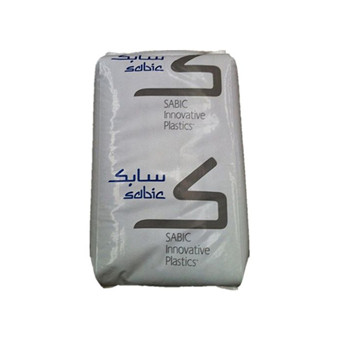PC LEXAN™ EXL1414-WH9B578
51
- Properties:ProcessabilityModerate liquidityDuctilitycopolymerGood demolding performanc
- Usages:currencyElectrical fieldElectronic field
- Certificates:UL
Technical Data Sheet
| physical property | Test Condition | Test Method | Test Result |
|---|---|---|---|
| Molten Volume Flow Rate (MVR) | ISO 1133 | 9.00 cm3/10min | |
| melt mass-flow rate | ASTM D1238 | 10 g/10 min | |
| Shrinkage rate | 内部方法 | 0.40 到 0.80 % | |
| 内部方法 | 0.40 到 0.80 % | ||
| Water absorption rate | ISO 62 | 0.35 % | |
| ISO 62 | 0.15 % | ||
| density | ASTM D792 | 1.18 g/cm³ | |
| ISO 1183 | 1.19 g/cm³ |
| hardness | Test Condition | Test Method | Test Result |
|---|---|---|---|
| Rockwell hardness | ASTM D785 | 89 | |
| ASTM D785 | 121 |
| flammability | Test Condition | Test Method | Test Result |
|---|---|---|---|
| Hot filament ignition temperature | IEC 60695-2-13 | 875 °C | |
| IEC 60695-2-13 | 875 °C | ||
| Burning wire flammability index | IEC 60695-2-12 | 960 °C | |
| IEC 60695-2-12 | 850 °C | ||
| UL flame retardant rating | UL 94 | HB |
| Impact resistance | Test Condition | Test Method | Test Result |
|---|---|---|---|
| Dart impact equipped with measuring instruments | ASTM D3763 | 70.0 J | |
| Unscented Izod Impact Strength 8 | ISO 180/1U | 无断裂 | |
| ISO 180/1U | 无断裂 | ||
| Impact strength of cantilever beam gap | ISO 180/1A | 70 kJ/m² | |
| ISO 180/1A | 60 kJ/m² | ||
| ASTM D256 | 870 J/m | ||
| The impact strength of a simply supported beam without a notch is 7 | ISO 179/1eU | 无断裂 | |
| Impact strength of cantilever beam gap | ASTM D256 | 770 J/m | |
| The impact strength of a simply supported beam without a notch is 7 | ISO 179/1eU | 无断裂 | |
| Impact strength of simply supported beam gap 7 | ISO 179/1eA | 70 kJ/m² | |
| ISO 179/1eA | 65 kJ/m² |
| Mechanical properties | Test Condition | Test Method | Test Result |
|---|---|---|---|
| Bending stress | ASTM D790 | 92.0 Mpa | |
| Flexural modulus | ISO 178 | 2250 Mpa | |
| Bending stress | ISO 178 | 85.0 Mpa | |
| Flexural modulus | ASTM D790 | 2230 Mpa | |
| elongation | ISO 527-2/50 | 120 % | |
| Tensile modulus | ASTM D638 | 2020 Mpa | |
| ISO 527-2/1 | 2150 Mpa | ||
| tensile strength | ASTM D638 | 55.0 Mpa | |
| ISO 527-2/50 | 57.0 Mpa | ||
| ASTM D638 | 50.0 Mpa | ||
| ISO 527-2/50 | 60.0 Mpa | ||
| elongation | ASTM D638 | 6.0 % | |
| ISO 527-2/50 | 6.0 % | ||
| ASTM D638 | 98 % |
| injection | Test Condition | Test Method | Test Result |
|---|---|---|---|
| screw speed | 40 到 70 rpm | ||
| Exhaust hole depth | 0.025 到 0.076 mm | ||
| Temperature | 70 到 95 °C | ||
| Back pressure | 0.300 到 0.700 Mpa | ||
| Processing (melt) temperature | 295 到 315 °C | ||
| Temperature in the middle of the barrel | 280 到 305 °C | ||
| Temperature at the front of the material cylinder | 295 到 315 °C | ||
| Spray nozzle temperature | 290 到 310 °C | ||
| Suggested injection volume | 40 到 60 % | ||
| Temperature at the rear of the barrel | 270 到 295 °C | ||
| Suggested maximum moisture content | 0.020 % | ||
| drying temperature | 120 °C | ||
| drying time | 3.0 到 4.0 hr |
| Electrical performance | Test Condition | Test Method | Test Result |
|---|---|---|---|
| Dissipation Factor | ASTM D150 | 9.3E-3 | |
| ASTM D150 | 1.2E-3 | ||
| dielectric constant | ASTM D150 | 2.64 | |
| ASTM D150 | 2.68 | ||
| dielectric strength | ASTM D149 | 16 KV/mm | |
| Volume resistivity | ASTM D257 | > 1.0E+15 ohms·cm | |
| Surface Resistivity | ASTM D257 | > 1.0E+15 ohms |
| Thermal performance | Test Condition | Test Method | Test Result |
|---|---|---|---|
| ASTM E831 | 7.5E-5 cm/cm/°C | ||
| RTI Imp | UL 746 | 120 °C | |
| RTI | UL 746 | 125 °C | |
| ISO 11359-2 | 7.2E-5 cm/cm/°C | ||
| RTI Elec | UL 746 | 130 °C | |
| vicat | ISO 306/B120 | 146 °C | |
| Ball Pressure Test | IEC 60695-10-2 | 通过 | |
| ASTM E831 | 7.0E-5 cm/cm/°C | ||
| ISO 11359-2 | 7.2E-5 cm/cm/°C | ||
| vicat | ASTM D152510, ISO 306/B5010 | 145 °C | |
| Thermal deformation temperature under load | ISO 75-2/Ae | 128 °C | |
| ASTM D648 | 124 °C | ||
| ISO 75-2/Be | 140 °C | ||
| ASTM D648 | 139 °C |
IMPORTANT NOTES: Plas.com collected the data in the data sheet from the material manufacturers. Plas.com makes the best effort to improve the accuracy of the data, but has no responsibility for the data. We strongly recommend verifying the validity of the data with the material manufacturers before making a final decision.
Contact Us
Get App
Top
